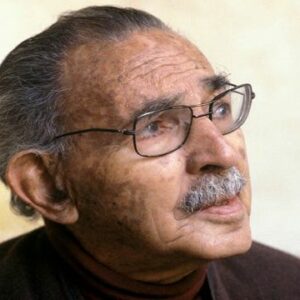Hassan Fathy is a well-known and respected architect in Egypt. He had ideas that were very different from what people thought at the time. He is one of the few famous architects whose buildings aren’t flashy or hard to understand. Instead, they are simple and cost-effective for the people. Most of his fellow architects didn’t agree with him and liked more modern ways of doing things. Fathy was most interested in making the lives of the poorer people better. He built homes the old-fashioned way, with mud and bricks instead of concrete and steel. This is not only a lot cheaper, but it also shows one of his main points, which is that people in the past knew how to build much better than the way architects build today, which is a lot more dangerous. He worked hard to make housing units that were unique, long-lasting, affordable, and a big step up for people in the lower class. Another important part of his work was making designs that took into account Mother Nature and her wrath. For example, he built beautiful courtyards that used the north-westerly winds to naturally cool the area. His ideas were very different from those of most architects at the time, but today they are very well thought of.
Early years and childhood
This well-known architect was born in Alexandria, Egypt, on March 23, 1900. His family had a lot of money, and when he was young, he loved to paint and draw.
His family moved to Cairo in 1908. He liked to draw as a child and continued to do so as a young adult. Because of his skill, he was able to study architecture at “King Fuad University,” which is now called “Cairo University.”
He got his diploma in 1926, with an emphasis on engineering and architecture. In the same year, he got his first important job as an engineer for the “General Administration of Schools.”
Hasan Fatty’s Career
He was a teacher at the “Faculty of Fine Arts” from 1930 to 1946. At the beginning of his career as a professor, he was asked to build a school in Talk.
The Antiquities Department of Egypt hired him in 1946 to build the “New Gourna Village.” He built with traditional bricks and mud, and he got the villagers to help him build their new homes. He was very good at making buildings that were both long-lasting and affordable.
In 1949, the “Ministry of Education” named him “Director of the Educational Buildings Department.” His time here showed him how different his style of architecture was from modernist ones.
In 1953, he was named “Head of the Department of Architecture” at the “Faculty of Fine Arts.” During this time, he finished many projects, such as the “Alexandria Resthouse,” the “Muhammad Musa Villa,” the “Harraniya Weaving Village,” and the “Fares School.”
In 1959, he left Egypt for a short time and went to Greece to work for the “Doxiadis Organization.” He worked on big projects in Iraq and Pakistan, where he pushed for his traditional designs that fit in better with nature.
In 1963, he went back to Egypt and started his work as a public speaker and advisor. His main goal was to spread his ideas about architecture, which were cheaper than the modern way of doing things.
In 1969, he wrote a book called “Architecture for the Poor.” It was about how he helped build the village of New Gourna. He talked about how his view of architecture was different and showed how effective it was to build with mud bricks instead of modern concrete and steel.
In 1976, he went to Vancouver, Canada, to take part in a U.N. conference on Habitat. This led to him being on the committee for the “Aga Khan Award for Architecture” and holding several government jobs in Cairo until he died.
Works of note
He finished his first project, the village of New Gourna, at the end of the 1930s. The village was built so that the people who lived in the “Valley of the Kings” and “Valley of the Queens” could move there.
His ideas were shaken up by economic problems, but his designs were praised by professionals in Spain, France, and the Netherlands. He has also featured in British professional journals and a British weekly. This helped him get where he wanted to go in his career.
Awards & Achievements
In 1980, he was given the “Balzan Prize” by the “International Balzan Prize” foundation for his outstanding work in architecture. This prize is usually given to creative ideas that promote the humanities, the natural sciences, and efforts to make the world a better place.
Fathy was given the “Right Livelihood Award” in 1980. This award is often thought of as an alternative Nobel Prize. This international award helps people who seem to have answers to the problems of the day. He was the first person to get this award, which is still given to smart people today.
Personal History and Legacies
He got married to Aziza Hassanein, who he loved. Even though they didn’t have any kids of their own, his nephews and nieces made sure to keep his name alive.
In contrast to modern architects, Fathy was most important to architecture because he cared about the problems of the poor. Modern architecture called for mass housing and expensive materials, but he liked to build with mud because it was simple and cheap. His ideas may not have been popular at the time, but they are very well thought of now.
On November 30, 1989, this great person who helped people died at the age of 89. He died at home, where he was at peace.
Estimated Net worth
Hassan is one of the most popular and wealthiest architects. Based on what we know and what Wikipedia, Forbes, and Business Insider say, Hassan Fathy is worth about $13 million.


